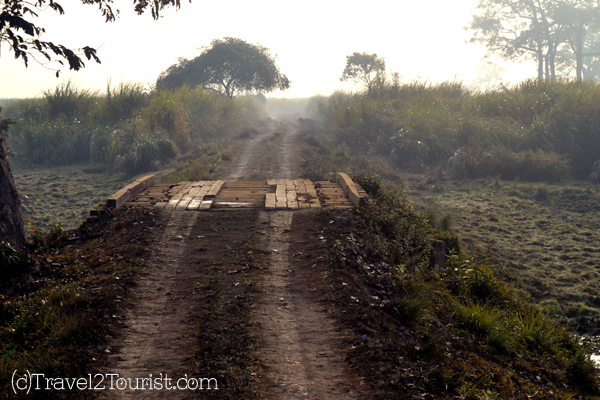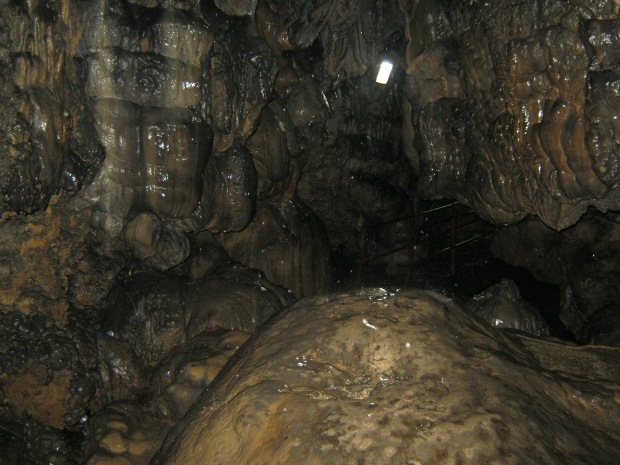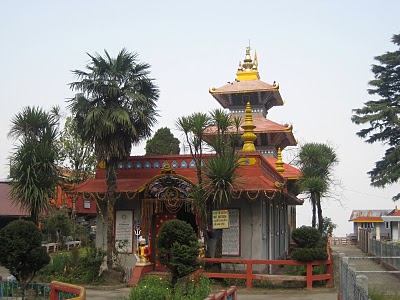Tawang is a small town situated in the north-eastern state of Arunachal Pradesh located at an altitude of 3500 m above the sea level covers the area of 2085 sq km and is surrounded by Tibet in the north, Bhutan in the southwest, Kameng in the east and is separated from the west by Eastern Himalayan ranges. Tawang offer a fine blend of sightseeing and adventure which attracts and fascinates traveler. Tawang is an adventure lover’s paradise and offers wonderful trekking opportunities. Trekking lovers may undertake short to long treks along the beautiful countryside. The landscape of Tawang assumes a new look during snowfall in the months of December and January.
Tawang is also famous for Buddhist influences and has one of the biggest monasteries of India. Tawang has countless monasteries and nunneries, picturesque landscape and hills, upstream lakes like the Sangetsar Lake, PTso Lake, Madhuri Lake which is known for its scenic surroundings as well as rare animals, flora-fauna like snow pigeon and musk deer, several waterfalls and hot water springs. The place is perfect for religious as well as adventure tourism amidst unexplored scenic beauty. Tawang is popular haunt for several adventure sports. The rivers Tawang-Chu and Namjang-Chu are ideal for river-rafting activities. There are several options for rock-climbing, paragliding, skating and other winter sport activities available.

Tawang View (Photo courtesy Anoop Negi)

Tawang Valley (Photo courtesy Anoop Negi)
Tourist attractions in Tawang
Tawang Monastery (Gompa):
Tawang Ganden Namgyal Lhaste, popularly known as the Tawang or Gompa Monastery, is a 400 years old Mahayana Sect Buddhist Monastery. It was built during the 17th century AD by Mera Lama, a contemporary of the 5th Lama. It is one of the largest lama series of Mahayana Buddhism and the second oldest monastery in the world after Lhasa. The monastery houses over 500 monks. It is also a centre of Buddhist Cultural Studies.
It is worth visiting place because of the collection of huge scriptures, books, gold lettered Buddhist scriptures, images and tapestries. The Parkhang Hall of the monastery has the library with the rare hand-written and block-painted thankas or manuscripts of revered books like Tangun, Kangyur and Sungbhum. The 108 gold-embossed manuscripts of the ‘Teaching of Lord Buddha’ and 225 volumes of the explanations of Buddha’s teachings covered with specially designed moth – proof silk adorned with paintings are the other rare works of Buddhist literature. The highlights of this monastery are the imposing three-storied assembly hall and the 28 ft high golden statue of Lord Buddha. The famous Buddhist gold inscribed scriptures Kangyur and Tangyur are preserved here. The festival of Torgya is held in the 11th Monpa month called the Dawa Chukchipah in the Tawang Monastery. A Craft Center here produces fine woolen carpets in various colorful designs. With the backdrop of snow-clad Himalayas and gushing waters of the rivers, Tawang is a tourist paradise and a perfect blend for adventure and religious tourism.

Khinmey Nyingma Monastery,Tawang, Arunachal Pradesh
Regyaling Gompa:
Regyaling Gompa was constructed by the former Rigya Rinpoche, is located at a distance of 1 kilometre from Tawang Town. However, after his death, the charge of the Gompa was taken over by his secretary, Chang-sey. The monastery is surrounded by a lush green pine grove.
Urqelling Monastery:
Believed to have been in existence since 14th century, it is about 3 km from Tawang. Urqelling Monastery is the birthplace of the 6th Dalai Lama who is the only Indian to have risen to such a high position in Gelupka Sect of Buddhism so far. These monasteries along with several other monasteries and nunneries are visited by several tourists from all over the world.
Gyangong Ani Gompa (Buddhist Nunnery):
Gyangong Ani Gompa, perched on the top of a beautiful hillock is nunnery, is located at a distance of around 5 kilometer in the north of Tawang. Being home to about 50 Buddhist nuns, it was found by Mera Lam Lodre Gyamtso.
Taktsang Gompa (Tigers Den):
Taktsang Gompa, located at a distance of 45 kilometre from Tawang Town, is one of the most famous tourist attractions. The site of this gompa is believed to be blessed in the 8th century AD by the visit of Guru Padmasambhava. Located on the ridge of a small hill, the monastery is surrounded by dense coniferous forest, where devotees can conduct a roundabout.

Taksang Gompa, Tawang, Arunachal Pradesh (Photo courtesy srikanth bhargava)
Gorsam Chorten:
Situated 90 km from Tawang, it is the largest stupa in the area. It is believed to have been constructed in early part of 12th century; it is founded by a Monpa monk, Lama Pradhar. On the top of the chorten is a semi-circular dome that rests up on a three-terraced plinth. In addition, on the lower most terrace of the plinth, there are four miniature stupas standing erect on the four corners.The base of this chorten is squared with each side about 170 feet in length with a niche running along its whole length. Moreover, there are around 120 manis set in the wooden frames. Encircling the stupa is a well paved path on which pilgrims go roundabout for praying, which is also known as Kora.
P T Tso (Pangang Teng Tso) Lake:
It is located 17 km away from maddening crowd of township of Tawang, is an ideal picnic spot. The calm water, silently moving clouds, earth with its wetness, chirping of birds and warmth is all that one gets while visiting Pankang Teng Tso Lake. The lake is well maintained by the Indian Army and offers a soothing and tranquil atmosphere to its visitors. The lake remains frozen in winter and is ideal to visit only in summers. During winter, the lake provides an ideal spot for skiing. The path towards the lake is laden by bright rhododendron flowers that add to the exquisiteness of the place. One can also find colourful birds on the lake side and engage in wonderful nature photography.

P T Tso (Pangang Teng Tso) Lake, Tawang ( Photo courtesy SOURADIPTA)
Shonga-tser Lake (Madhuri Lake):
Shonga-tser lack is popularly known by Madhuri Lake as the Hindi film Koyla was shot here. Nestled amidst the pristine mountains and picturesque surrounding, it is located about 42 km from Tawang. It was formed in the aftermath of the 1950 earthquake. Prior to the earthquake, this piece of land used to be employed as the grazing ground for the cattle. The evidence of it can be seen in the protruding trunks of the dead trees from the middle of the lake. The lake has been under supervision of Army men, who have also arranged for a cafeteria nearby. Tourists can relish on the delicious Momos, Maggis topped with a cup of tasty coffee or tea. Tourists can also take to trekking around the lake while enjoying the gentle lashes of the pleasant breeze around.

Shungetser Tso(Madhuri Lake), Tawang( Photo courtesy Mandeep Baruah)
Banga Jang Lake:
Banga Jang Lake, situated in the Banga Jang range, is one of the famous lakes located near Tawang Town. It is a very charming lake, situated in an enchanting backdrop. This lake also has the religious significance. This place has been the favorite haunt for the number of religious minded people.
Sela Pass:
Located at 13, 714 ft above mean sea level, Sela Pass is of high strategic importance. It is the world’s highest motorable high-altitude mountain pass. It connects Tawang to Tezpur and Guwahati and is the main road connecting Tawang with the rest of India. Tawang is situated at a distance of 78 km from Sela Pass while Guwahati is at a distance of 340 km. The pass has hardly any vegetation and is usually snow covered to some extent all through the year. During winter temperature in the pass can go down to 0 to -10 degrees. The visitors can also see another attraction before reaching this pass, known as the Paradise Lake.

Sela Pass, Tawang , Arunachal Pradesh (Photo courtesy rob.)
Jaswant Garh:
Jaswant Garh, other important tourist destination of Tawang which is located at a distance of 21 Kms from Sela Pass is broadly recognized for a home of a warrior named as Jaswant Singh, who sacrificed his life during the battle fought against Chinese soldiers in the year 1962. The place has its own importance and attracts many tourists every year to give respect to this heroic warrior.

Jaswant Garh, Tawang (Photo courtesy gsurya)
Tawang War Memorial:
Dedicated to Indian soldiers who lost their lives during the 1962 Indo-China war. It is also known as Namgyal Chorten, it is a 12 m high multicoloured memorial whose structure resembles the design of a large stupa. The memorial is situated among beautiful peaks which overlooks the Tawang-Chu valley.

Tawang War Memorial (Photo courtesy foto_morgana)
Bong Bong (Nuranang) waterfall:
One of the most beautiful waterfalls close to Jang, the micro hydel project is Nuranang Waterfalls. It is situated on the Tawang Sela main highway, just 40 km from the city of Tawang.
BTK (Bap Teng Kang) Waterfall:
Bap Teng Kang, known popularly as BTK Waterfall is one of the most striking and beautiful waterfalls in Tawang, attracting countless tourists every year. Bap Teng Kang is situated in a picturesque paradise of lush green vegetation, falling from a height of over 100ft. This waterfall is located in Yumkhang, 85 km on route from Tawang towards Zemithang.
Gorichen Peak:
Gorichen Peak, highest peak of Arunachal Pradesh, is located between Tawang and West Kameng districts. Bordering with China, this peak has a height of 22,500 feet. Located at a distance of 164 kilometre from Tawang Town, this peak is also known as Sa-Nga Phu, which literally means the Kingdom of Deity. According to Monpa tribe, this peak is considered to be one of the sacred peaks protecting them from all the evils.
The peak is one of the ideal bases for trekking and mountaineering in the entire region. Months of April, May, September and October are considered to be best months to explore the Gorichen Peak
Ghesila range:
Ghesila Range is located at a distance of 25 kilometre from Tawang Township. This range is also believed to be a protection wall for Tawang. The entire range runs along the north-eastern side of Tawang Township.
Tawang Library:
The library is a repository of thousands of block-printed commentaries and treasures on the subject of Mahayana Buddhism. This is a valuable resource for Buddhist scholars in the region. Even the paper used in this library is produced by the Monpas locally, from the bark of the Hong Seng tree.
Best time to visit:
Summer season starts in Tawang from March and ends in June. Temperature ranges from 5- 22 degrees Celsius. Hottest month of the year is usually June. Tawang gets rainfall between July to October. Temperatures are much lower during winter period and visiting Tawang during this time is not a good idea. December, January and February constitute winter season. Temperatures range from a minimum of -2 degrees Celsius and can go up to a maximum of around 5 degrees Celsius during this time. April to October is the best time to visit.
How to reach Tawang:
Indians require special inner line permits to visit Tawang while foreign tourists intending to visit Arunachal Pradesh require restricted area permit. The inner line permit can be obtained from any of the following places: Residence Commissioner, Govt of Arunachal Pradesh, Arunachal Bhawan, Kautilya Marg, Chanakyaputi, New Delhi, Deputy Residence Commissioner, Govt. of Arunachal Pradesh, Kolkata, CE-109, Sector-1, Salt Lake City, Kolkata, Deputy Residence Commissioner, Govt. of Arunachal Pradesh, R G Baruah Road, Guwahati and Deputy Residence Commissioner, Govt. of Arunachal Pradesh, Parvati Nagar, Tezpur.
By Air: Tezpur Airport, located 385 km away, is the nearest airport. It is connected by flights from Kolkata and Guwahati. Lokpriya Gopinath Bordoloi International Airport, 547 km away at Guwahati is the nearest international airport.
By Helicopter: Pawan Hans operates helicopter services daily from Guwahati airport except Sunday. It costs around Rs 4000 for adults and Rs 2500 for children one way.
By Rail: Tezpur and Guwahati is the major rail head closest to Tawang. You can avail Buses and private taxis to reach Tawang from Tezpur or Guwahati. From Guwahati you can take a bus or tavera to reach Tezpur. A taxi from Tezpur to Tawang will cost you around INR 4000 to 5000. You can contact Himalayan Holidays (Himalayan Holidays, Kabar Khana Road, and Tezpur. Ph: 03712-223580 (O), 221646(R), 9957178796) to get a taxi and a driver. It is advised that you take a Sumo or Safari.
By Bus: Buses and Taxi ply regularly between Tezpur (Assam) and Bomdila. It takes about 12 hours to reach Tawang from Tezpur. In addition to private taxis, shared taxis are also available. The journey to Tawang by road is an arduous one. A major part of the road is loose tarmac and gravel giving way to mud in many places. However, it is a scenic journey and makes up for the strain one has to endure.
Arunachal State Transport runs buses to Bomdila are available from Tezpur on Wednesday, Friday and Saturday and the journey time is 8hrs. Private buses also run daily and frequently via Bomdila to and from Tezpur, depart Tezpur at noontime and arrive Tawang early in the morning of the following day.




































